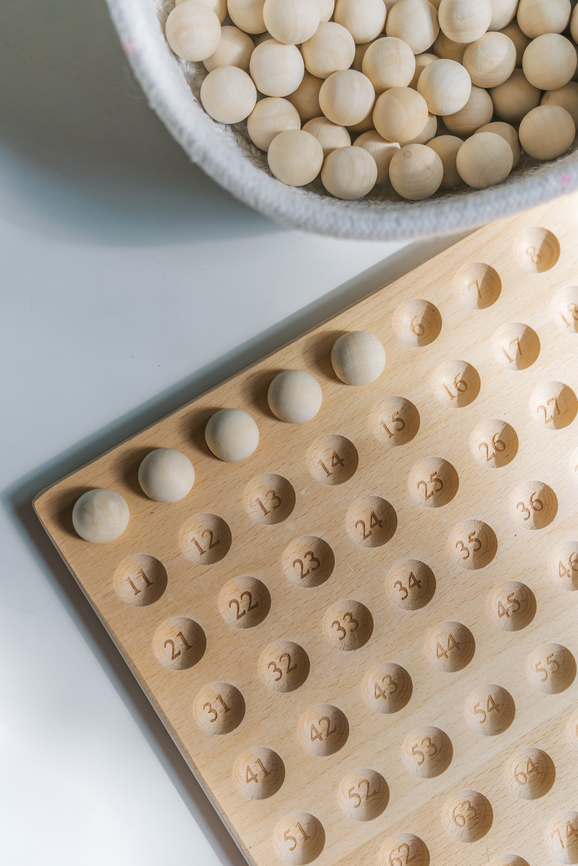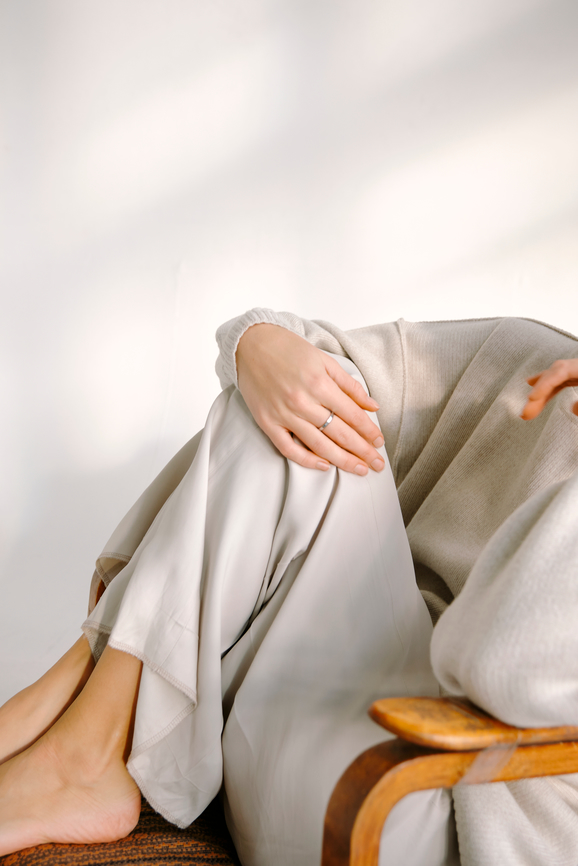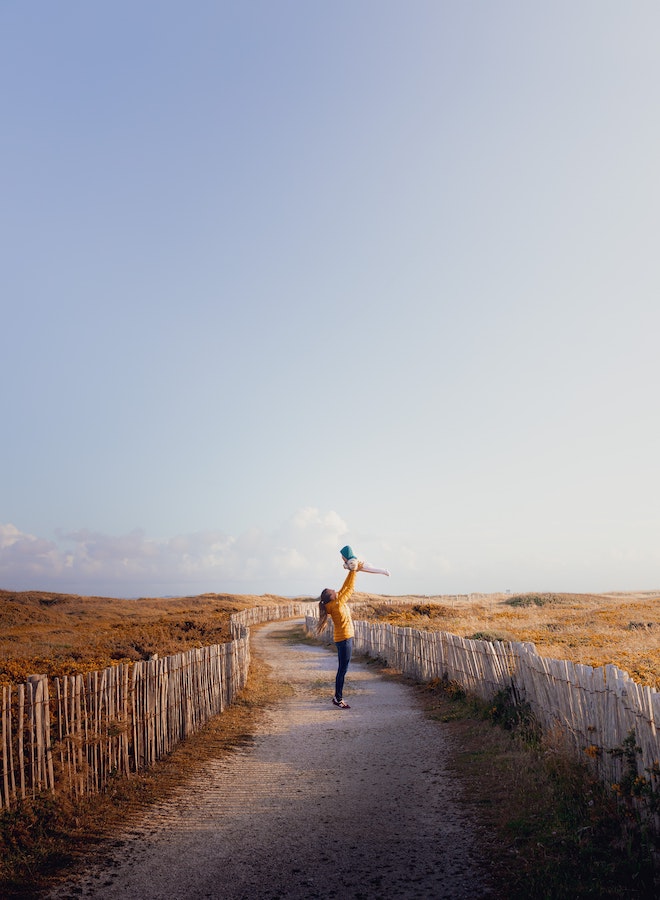
What Are The Benefits of Montessori?
If you have young kids — or even if you don’t — chances are high that parenting styles and early childhood education philosophies are buzzing around you, taking over your Instagram feed and casual conversation. Gentle parenting and play-based learning might more or less tell you what they are, but what about “child honoring?” Who is Reggio Emilia? And when they say Waldorf, they don’t mean the salad do they?
Montessori is chief among the buzzwords out there that no one thought to explain to you. Despite its being used to describe everything from toys to kids’ kitchen supplies to schools, most of us have a fuzzy picture of Montessori principles. What is Montessori, really? Is it a lifestyle or is it an institution? Is it something you can practice at home, or do you need to find a certified teacher?
Let’s dive into one of the most well-known (and, arguably, least understood) educational philosophies out there and look at the core beliefs that it’s built around.
What Is Montessori?
Montessori is an educational philosophy named after its founder, Dr. Maria Montessori, an early-twentieth century Italian educator and scientist. The first female physician in Italy, she was invited to create a childcare center in San Lorenzo, an impoverished district of Rome. She opened the Casa de Bambini in 1907 to uneducated and economically disadvantaged children. Her goal was to determine how she could shape the environment to help the children learn, despite where they’d come from and how little experience they’d had with education so far.
Through scientific observation and responsive experimentation, Dr. Montessori noticed that the kids were responsive and engaged with meal preparation, cleaning and caring for their surroundings, and engaging in other hands-on activities. The children who had previously been described to her as “unruly” and “unteachable” showed calm, peaceful behavior, and periods of deep concentration. She observed that they showed a sense of order derived from caring for their environment, and that they were absorbing information and knowledge at all times. This was the spark for her teaching model and educational philosophy, which supports a self-motivated and holistic method for learning and development, on the foundation that all children and adolescents have a natural desire to learn, understand, and respect their environment.
So what does this mean? Essentially, kids get more independence and a stronger sense of control over what they are learning each day. Their education is not reduced to just a handful of intellectual subjects like reading and math, but instead integrating the whole child, including their social, emotional, and physical development. “Rather than simply filling children with facts, Montessori education strives to nurture each child’s natural desire for knowledge, understanding, and respect,” says Melanie Thiesse, Director of Membership and School Accreditation at the American Montessori Society.
Some key distinctions in a Montessori classroom make it immediately discernible from a traditional one:
- Settings are calm and home-like, with soft rugs and places to sit, and activity stations that are neatly arranged and at accessible heights for children to choose independently.
- Teachers move from group to group, rather than standing in a central location before the class.
- Activities are geared toward developing self-confidence and independence, and children are allowed to choose an activity to engage with as long as they like before cleaning it up and making another choice.
- Everything needed for the classroom to work is made accessible to them — child-sized furniture, low-sinks, open shelving, as well as tools and utensils that allow them to care for themselves and their environment. These encourage their involvement in every aspect of the day.
- There are no desks; instead, children work on mats on the floor or at child-sized tables, independently or in small groups.
These deliberate classroom designs are a space that Montessori refers to as the “Prepared Environment.” Dr. Maria Montessori explains in her book, The Secret of Childhood: “When a child is given a little leeway, he will at once shout, ’I want to do it!’ But in our schools, which have an environment adapted to children’s needs, they say, ‘Help me to do it alone.’”
The Five Core Components of Montessori Education
While some of the educational philosophy of Montessori might seem familiar to you, there is sometimes a tendency from toy companies and marketing campaigns to co-opt the aesthetics of Montessori, leaving behind key details. I like to think of this as the difference between sparkling wine and Champagne: People sometimes use “Champagne” to describe any alcoholic bubbly, but the only wine that can technically go by that name is the kind that comes from the Champagne region of France. Maybe you’re thinking po-TAY-to, po-TAH-to; I wanted a mimosa, not a lecture! But let’s just say that when it comes to early childhood education, not all beautiful wooden toys in muted colors are created equal.
These are the Five Core Components of Montessori Education:
- Trained Montessori Teachers. Teachers are not only trained in the Montessori theory and philosophy, they also learn the accurate use of Montessori materials appropriate for different age groups. Training is completed by specific accredited Montessori teacher education programs, and includes a rigorous matrix of specific skills to foster the developmental and psychological support of their students.
- The Multi-Age Classroom. Though some schools alter the exact mix, multi-age groupings are a tenant of Montessori philosophy. Ideally grouped in three-year cycles, younger children learn from observing older children, and older children develop peer-to-peer leadership skills.
- Using Montessori Materials. Hands-on activities are a cornerstone of Montessori, and each beautifully and precisely crafted object is designed to teach a single skill or concept.
- Child-Directed Work. The child-led approach to their daily activities (in Montessori, they refer to this as the children’s “work”) is meant to foster intrinsic motivation, deep concentration, and a sense of responsibility for oneself and their environment. The classroom design reflects this.
- Uninterrupted Work Periods. During these periods, children are encouraged to engage with an activity at their own pace and for as long as they would like, without interruption (in other words, no one tells them it’s time to share). Teachers support and monitor but the child is meant to choose an activity, engage with it as long as they like, clean it up, and return it before selecting a new activity.
While the Montessori method has been incorporated across many different types of schools (private, charter, faith-based), all true Montessori schools are built on these five components.
What Are The Pros and Cons Of Montessori?
Nothing is perfect, and even the most beloved institutions have their flaws. Here’s a quick breakdown of some of the benefits, as well as the challenges, of Montessori.
Pros:
- Self-paced and self-directed learning allows students to reach milestones on their developmental timelines, rather than getting left behind in a one-size-fits-all approach.
- A focus on independence fosters an early confidence in each child’s ability to learn, as well as creative freedom and critical thinking skills.
- Social interaction is enhanced by peer-to-peer learning in a multi-age environment.
- The curriculum and environment is easily adaptable and inclusive for learning differences and neurodivergences.
Cons:
- It can be expensive: The high-quality materials, extensive training for educators, and sought-after reputation often make Montessori schools cost-prohibitive for many families.
- Even aside from the tuition rates, Montessori schools are not locally accessible to all: There are only 5,000 Montessori schools in the US, and only 500 public programs.
- The “follow the child” approach is not for everyone, and does not guarantee that a child will be fully prepared for all subjects in higher education.
How To Adopt Montessori Methods at Home
If you’re curious how your child would respond to a Montessori environment, or if you’d like to incorporate some of the methods because schools are scarce or cost-prohibitive in your area, the great news is that you probably already have what you need to practice Montessori at home!
The Prepared Environment
The self-direction encouraged by Montessori is aided by what they call the “Prepared Environment,” or essentially a classroom that allows children to explore and learn at their own pace. The tenants of this are fairly straightforward: Calm, Clean, Accessible. You don’t need to limit the Montessori method to a single location — children are learning all the time, whether they are in the bathroom or at their bookshelf —but it might help to choose an area and consider the following:
- The fewer the better. Have you ever noticed how kids will ignore their toys if they’re all piled in a giant box? A limited number of activities displayed clearly tends to be easier for children to engage with. A cube shelf is great for this: One work activity per cube.
- Visually calm and orderly. Choose furniture, rugs, and toys that are made from natural materials and in calming hues. Plastic technicolor furniture with logos and cartoon characters can visually obscure space and make it harder for developing brains to enter longer periods of sustained focus.
- Child-size. When possible, try to gear a space around their size, whether that’s utilizing the lower shelves of your bookshelves for their activities, or setting up a side table as their work area.
- Using everyday objects and toys. Do you have a play kitchen? Why not stock it with the extra wooden spoons, whisks, and potholders you probably have lying unused in one of your cupboards? Using real utensils and tools helps familiarize children with real-world objects and their actual uses, allowing them to learn as they play, as well as develop a sense of responsibility.
Montessori Parenting
Bringing Montessori into your home is much more than cleaning out some wooden cubes and giving your child a broom. It’s a philosophy first and foremost, and practicing it will involve some specific behaviors from you! Here’s a simple starter list:
- Observe your child as they work. Every successful child-led experience has an observant and prepared parent behind it. By watching your child and noticing what they are engaged with will help you tailor the Prepared Environment to their interests. Does your child spend an afternoon absorbed in a book about the ocean? Create a sea-themed basket or tray of books, toys, and activities so they can dive deeper.
- Expect and accept mistakes. Accidents and mistakes are an essential part of learning, and they should be treated this way. If your child spills their cup of milk, tamp back the instinct to lift your child away from the mess so you can come back and clean it up. Instead, help your child gather the appropriate cleaning supplies, and then direct and assist them in cleaning up and replacing their milk.
- Give them space. The goal of the Montessori method is to foster your child’s sense of independence. This means not only creating a Prepared Environment where they can move freely and independently, but that they also feel empowered to find and prepare their own snack, clean up their own messes, and get a sense of satisfaction from their own perceived successes. Montessori kids use problem-solving skills when things feel hard. If they are used to parents hovering over and guiding their every activity, it will be harder to figure out how to move through a challenge, or how to feel good about a project that doesn’t receive instant praise. Sit back. Let them take the wheel for a bit. You might be surprised how much they can handle on their own.
While the benefits of Montessori are many, it’s important to remember that there’s no one single method or philosophy that is best for all types of children (parents with multiple children at home can attest to this!). Parenting is a highly personal collaboration between you and your kids, and the targets are constantly moving: However you managed to hit the bullseye one day might result in an inexplicable meltdown the next (from you or your kid, iykyk). It’s easy to get caught up in worrying over whether you’re doing it “right,” but the only thing that matters is that you love your kid, and that they know it.
For those who are interested in Montessori but do not have young children, note that Dr. Montessori’s late work expanded to cover the stage of adolescence, suggesting that the Montessori method might hold lessons for us all.
Stephanie H. Fallon is a writer originally from Houston, Texas. She has an MFA from the Jackson Center of Creative Writing at Hollins University. She lives with her family in the Blue Ridge Mountains of Virginia, where she writes about motherhood, artmaking, and work culture. You can find her on Instagram or learn more on her website.




